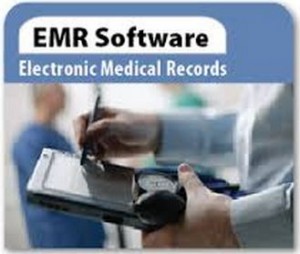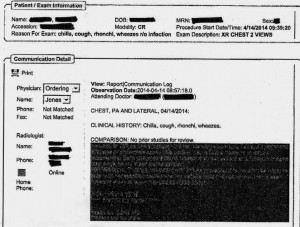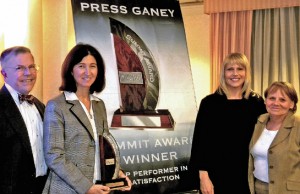April 21st, 2014 by Dr. Val Jones in Opinion, True Stories
2 Comments »
 For the past couple of years I’ve been working as a traveling physician in 13 states across the U.S. I chose to adopt the “locum tenens lifestyle” because I enjoy the challenge of working with diverse teams of peers and patient populations. I believe that this kind of work makes me a better doctor, as I am exposed to the widest possible array of technology, specialist experience, and diagnostic (and logistical) conundrums. During my down times I like to think about what I’ve learned so that I can try to make things better for my next group of patients.
For the past couple of years I’ve been working as a traveling physician in 13 states across the U.S. I chose to adopt the “locum tenens lifestyle” because I enjoy the challenge of working with diverse teams of peers and patient populations. I believe that this kind of work makes me a better doctor, as I am exposed to the widest possible array of technology, specialist experience, and diagnostic (and logistical) conundrums. During my down times I like to think about what I’ve learned so that I can try to make things better for my next group of patients.
This week I’ve been considering how in-patient doctoring has changed since I was in medical school. Unfortunately, my experience is that most of the changes have been for the worse. While we may have a larger variety of treatment options and better diagnostic capabilities, it seems that we have pursued them at the expense of the fundamentals of good patient care. What use is a radio-isotope-tagged red blood cell nuclear scan if we forget to stop giving aspirin to someone with a gastrointestinal bleed?
At the risk of infecting my readers with a feeling of helplessness and depressed mood, I’d like to discuss my findings in a series of blog posts. Today’s post is about why electronic medical charts have become ground zero for deteriorating patient care.

EMR Alert - Featuring radiologist note in illegible font color
1. Medical notes are no longer used for effective communication, but for billing purposes. When I look back at the months of training I received at my alma mater regarding the proper structure of intelligent medical notes, I recall with nostalgia how beautiful they were. Each note was designed to present all the observed and collected data in a cohesive and logical format, justifying the physician’s assessment and treatment plan. Our impressions of the patient’s physical and mental condition, reasons for further testing, and our current thought processes regarding optimal treatments and follow up (including citation of scientific literature to justify the chosen course) were all crisply presented.
Nowadays, medical notes consist of randomly pre-populated check box data lifted from multiple author sources and vomited into a nonsensical monstrosity of a run-on sentence. It’s almost impossible to figure out what the physician makes of the patient or what she is planning to do. Occasional “free text” boxes can provide clues, when the provider has bothered to clarify. One needs to be a medical detective to piece together an assessment and plan these days. It’s both embarrassing and tragic… if you believe that the purpose of medical notes is effective communication. If their purpose is justifying third-party payer requirements, then maybe they are working just fine?
My own notes have been co-opted by the EMRs, so that when I get the chance to free-text some sensible content, it still forces gobbledygook in between. I can see why many of my peers have eventually “given up” on charting properly. No one (except coders and payers interested in denying billing claims) reads the notes anymore. The vicious cycle of unintelligible presentation drives people away from reading notes, and then those who write notes don’t bother to make them intelligent anymore. There is a “learned helplessness” that takes over medical charting. All of this could (I suppose) be forgiven if physicians reverted back to verbal handoffs and updates to other staff/peers caring for patients to solve this grave communication gap. Unfortunately, creating gobbledygook takes so much time that there is less old fashioned verbal communication than ever.
2. No one talks to each other anymore. I’m not sure if this is because of a general cultural shift away from oral communication to text-based, digital intermediaries (think zombie-like teens texting one another incessantly) or if it’s related to sheer time constraints. However, I am continually astonished by the lack of face-to-face or verbal communication going on in hospitals these days. When I first observed this phenomenon, I attributed it to the facility where I was working. However, experience has shown that this is an endemic problem in the entire healthcare system.
When you are overworked, it’s natural to take the path of least resistance – checking boxes and ordering consults in the EMR is easier than picking up a phone and constructing a coherent patient presentation to provide context for the specialist who is about to weigh in on disease management. Nursing orders are easier to enter into a computer system than actually walking over and explaining to him/her what you intend for the patient and why.
But these shortcuts do not save time in the long run. When a consultant is unfamiliar with the partial workup you’ve already completed, he will start from the beginning, with duplicate testing and all its associated expenses, risks, and rabbit trails. When a nurse doesn’t know that you’ve just changed the patient to “NPO” status (or for what reason) she may give him/her scheduled medications before noticing the change. When you haven’t explained to the physical therapists why it could be dangerous to get a patient out of bed due to a suspected DVT, the patient could die of a sudden pulmonary embolism. Depending upon computer screen updates for rapid changes in patient care plans is risky business. EMRs are poor substitutes for face-to-face communication.
In one case I remember a radiology tech expressing amazement that I had bothered to type the reason for the x-ray in the order field. How can a radiologist be expected to rule out something effectively if he isn’t given the faintest hint about what he’s looking for? On another occasion I called to speak with the radiologist on a complicated case where the patient’s medical history provided him with a clue to look for something he hadn’t thought of – and his re-read of the CT scan led to the discovery and treatment of a life-threatening disease. Imagine that? An actual conversation saved a life.
3. It’s easy to be mindless with electronic orders. There’s something about the brain that can easily slip into “idle” mode when presented with pages of check boxes rather than a blank field requiring original input. I cannot count the number of times that I’ve received patients (from outside hospitals) with orders to continue medications that should have been stopped (or forgotten medications that were not on the list to be continued). In one case, for example, a patient with a very recent gastrointestinal bleed had aspirin listed in his current medication list. In another, the discharging physician forgot to list the antibiotic orders, and the patient had a partially-treated, life-threatening infection.
As I was copying the orders on these patients, I almost made the same mistakes. I was clicking through boxes in the pharmacy’s medication reconciliation records and accidentally approved continuation of aspirin (which I fortunately caught in time to cancel). It’s extremely unlikely that I would have hand-written an order for aspirin if I were handling the admission in the “old fashioned” paper-based manner. My brain had slipped into idle… my vigilance was compromised by the process.
In my view, the only communication problem that EMRs have solved is illegible handwriting. But trading poor handwriting for nonsensical digital vomit isn’t much of an advance. As far as streamlining orders and documentation is concerned, yes – ordering medications, tests, and procedures is much faster. But this speed doesn’t improve patient care any more than increasing the driving speed limit from 60 mph to 90 mph would reduce car accidents. Rapid ordering leads to more errors as physicians no longer need to think carefully about everything. EMRs have sped up processes that need to be slow, and slowed down processes that need to be fast. From a clinical utility perspective, they are doing more harm than good.
As far as coding and billing are concerned, I suppose they are revolutionary. If hospital care is about getting paid quickly and efficiently then perhaps we’re making great strides? But if we are expecting EMRs to facilitate care quality and communication, we’re in for a big disappointment. EMRs should have remained a back end billing tool, rather than the hub of all hospital activity. It’s like using Quicken as your life’s default browser. Over-reach of this particular technology is harming our patients, undermining communication, and eroding critical thinking skills. Call me Don Quixote – but I’m going to continue tilting at the hospital EMR* windmill (until they are right-sized) and engage in daily face-to-face meetings with my peers and hospital care team.
*Note: there is at least one excellent, private practice EMR (called MD-HQ). It is for use in the outpatient setting, and is designed for communication (not billing). It is being adopted by direct primary care practices and was created by physicians for supporting actual thinking and relevant information capture. I highly recommend it!
August 22nd, 2013 by Dr. Val Jones in Health Policy, Opinion
3 Comments »
 I used to be a big believer in the transformative power of digital data in medicine. In fact, I devoted the past decade of my life to assisting the “movement” towards better record keeping and shared data. It seemed intuitive that breaking down the information silos in healthcare would be the first logical step in establishing price transparency, promoting evidence-based practices, and empowering patients to become more engaged in their care decisions. Unfortunately I was very wrong.
I used to be a big believer in the transformative power of digital data in medicine. In fact, I devoted the past decade of my life to assisting the “movement” towards better record keeping and shared data. It seemed intuitive that breaking down the information silos in healthcare would be the first logical step in establishing price transparency, promoting evidence-based practices, and empowering patients to become more engaged in their care decisions. Unfortunately I was very wrong.
Having now worked with a multitude of electronic medical records systems at hospitals around the country, one thing is certain: they are doing more harm than good. I’m not sure that this will change “once we get the bugs out” because the fundamental flaw is that electronic medical records require data entry and intelligent curation of information, and that becomes an enormous time-suck for physicians. It forces us away from human interaction, thus reducing our patients’ chances of getting a correct diagnosis and sensible treatment plan.
How bad is it? The reality on the ground is that most hospitals are struggling enormously with EMR implementation. There are large gaps in the technology’s ability to handle information transfer, resulting in increased costs in the hundreds of millions of dollars per small hospital system, not to mention the tragically hilarious errors that are introduced into patient records at break neck pace.
At one hospital, the process for discharging a patient requires that the physician type all the discharge summary information into the EMR and then read it into a dictation system so that it can be transcribed by a team in India (cheaper than US transcription service) and returned to the hospital in another part of the EMR. The physician then needs to go into the new document and remove all the typos and errant formatting so that it resembles their original discharge summary note. In one of my recent notes the Indian transcriptionist misheard my word for “hydrocephalus” and simply entered “syphilis” as the patient’s chief diagnosis. If I hadn’t caught the error with a thorough reading of my reformatted note, who knows how long this inaccurate diagnosis would have followed the poor patient throughout her lifetime of hospital care?
Another hospital has an entire wing of its main building devoted to an IT team. I accidentally discovered their “Star Trek” facility on my way to radiology. Situated in a dark room surrounded by enough flat panel monitors to put a national cable network to shame, about 40 young tech support engineers were furiously working to keep the EMR from crashing on a daily basis – an event which halts all order processing from the ER to the ICU. Ominous reports of the EMR’s instability were piped over the entire hospital PA system, warning staff when they could expect screen freezes and data entry blockages. Doctors and nurses scurried to enter their orders and complete documentation during pauses in the network overhaul. It was like a scene from a futuristic movie where humans are harnessed for work by a centralized computer nexus.
At yet another hospital, EMR-required data entry fields regularly interrupt patient throughput. For example, a patient could not be given their discharge prescriptions without the physician indicating (in the EMR) whether each of them is a tablet or a capsule. As patients and their family members stand by the nursing desk, eager to be discharged home, their physician is furiously reviewing their OTC laxative prescriptions trying to click the correct box so that the computer will allow the transfer of the entire prescription list to the designated pharmacy. When I asked about the insanity of this practice, a helpful IT hospital specialist explained that the “capsule vs tablet” field was required by Allscripts in order to meet interoperability requirements with our hospital’s EMR. This one field requirement probably resulted in hundreds of extra hours of physician time per day throughout the hospital system, without any enhancement in patient care or safety.
For those of you EMR evangelists in Washington, I’d encourage you to take a long, cold look at what’s happening to healthcare on the ground because of these digital data initiatives. My initial enthusiasm has turned to exasperation and near despondency as I spend my days as a copy editor for an Indian transcription service, trying to prevent patients from being labeled as syphilitics while worrying about whether or not the medicine they’re taking is classified as a tablet or a capsule in a system where I may not be able to enter any orders at all if the central tech command is fixing software instability in the Star Trek room.
June 27th, 2012 by Dr. Val Jones in Health Tips, Opinion, Research
1 Comment »
 One would think that happiness and healing are inextricably linked in healthcare, but the Happy Hospitalist (HH) raises an interesting question: is modern medicine’s emphasis on patient satisfaction (and shared decision-making) sacrificing our quality of care? A recent study found that patients who preferred their physicians to take the lead in their medical decision-making had shorter, less costly hospital stays.
One would think that happiness and healing are inextricably linked in healthcare, but the Happy Hospitalist (HH) raises an interesting question: is modern medicine’s emphasis on patient satisfaction (and shared decision-making) sacrificing our quality of care? A recent study found that patients who preferred their physicians to take the lead in their medical decision-making had shorter, less costly hospital stays.
HH argues that if physicians are expected to perform like airline pilots, reliably choosing/performing the best course of action for those depending on them, then patients should behave like passengers. In other words, passengers don’t tell the pilot how to fly the plane, nor should patients override a physician’s clinical judgment with personal preferences.
I think this analogy misses the mark because patients are rarely interested in making decisions about how a physician accomplishes her task, but rather which tasks she undertakes. Flight passengers aren’t interested in quibbling about the timing of landing gear, they are interested in the selection of their destination city. And so they should be.
While there may be a correlation between physician-led decision-making and shorter hospital stays, I’m not convinced that this translates to improved care quality. For the study subjects, discharge could have been delayed because the “empowered” patients insisted on ensuring that a home care plan was in place before they left the hospital. Or perhaps they wanted to get their prescriptions filled before going home (knowing that they couldn’t get to their home pharmacy over the weekend)? The study did not assess whether or not the discharge delays reduced readmission rates, nor did it seek to determine the cause of prolonged stays. This study alone is insufficient to draw any conclusions about the relative value of the patient empowerment movement on health outcomes.
While I certainly empathize with HH about the excessive focus on patient satisfaction surveys over true quality care, I strongly believe that an educated, participatory patient is our best ally in the practice of good medicine. There are simply too many cogs and wheels turning at once in the healthcare system to be able to ensure that the right care is provided at the right time, every time. We need all the help we can get to monitor our care plans in order to avoid medical errors, compliance problems and missed opportunities.
If you see something, say something. That principle applies to healthcare as much as it does to flight safety.
November 29th, 2011 by EvanFalchukJD in Research
No Comments »

Bill Gates once said:
Success is a lousy teacher. It seduces smart people into thinking they can’t lose.
It’s clever, and it seems right. Now there is science to prove it.
In a study published last week, scientists studied special imaging scans of doctors’ brains as they made simulated medical decisions. Those doctors who paid attention to their mistakes made better decisions than those who were more interested in their successes: Read more »
*This blog post was originally published at BestDoctors.com: See First Blog*
October 10th, 2011 by Steve Novella, M.D. in Opinion, Research
No Comments »

While we frequently on SBM target the worst abuses of science in medicine, it’s important to recognize that doing rigorous science is complex and mainstream scientists often fall short of the ideal. In fact, one of the advantages of exploring pseudoscience in medicine is developing a sensitive detector for errors in logic, method, and analysis. Many of the errors we point out in so-called “alternative” medicine also crop up elsewhere in medicine – although usually to a much less degree.
It is not uncommon, for example, for a paper to fail to adjust for multiple analysis – if you compare many variables you have to take that into consideration when doing the statistical analysis, otherwise the probability of a chance correlation will be increased.
I discussed just last week on NeuroLogica the misapplication of meta-analysis – in this case to the question of whether or not CCSVI correlates with multiple sclerosis. I find this very common in the literature, essentially a failure to Read more »
*This blog post was originally published at Science-Based Medicine*
 For the past couple of years I’ve been working as a traveling physician in 13 states across the U.S. I chose to adopt the “locum tenens lifestyle” because I enjoy the challenge of working with diverse teams of peers and patient populations. I believe that this kind of work makes me a better doctor, as I am exposed to the widest possible array of technology, specialist experience, and diagnostic (and logistical) conundrums. During my down times I like to think about what I’ve learned so that I can try to make things better for my next group of patients.
For the past couple of years I’ve been working as a traveling physician in 13 states across the U.S. I chose to adopt the “locum tenens lifestyle” because I enjoy the challenge of working with diverse teams of peers and patient populations. I believe that this kind of work makes me a better doctor, as I am exposed to the widest possible array of technology, specialist experience, and diagnostic (and logistical) conundrums. During my down times I like to think about what I’ve learned so that I can try to make things better for my next group of patients.


 I used to be a big believer in the transformative power of digital data in medicine. In fact, I devoted the past decade of my life to assisting the “movement” towards better record keeping and shared data. It seemed intuitive that breaking down the information silos in healthcare would be the first logical step in establishing price transparency, promoting evidence-based practices, and empowering patients to become more engaged in their care decisions. Unfortunately I was very wrong.
I used to be a big believer in the transformative power of digital data in medicine. In fact, I devoted the past decade of my life to assisting the “movement” towards better record keeping and shared data. It seemed intuitive that breaking down the information silos in healthcare would be the first logical step in establishing price transparency, promoting evidence-based practices, and empowering patients to become more engaged in their care decisions. Unfortunately I was very wrong. One would think that happiness and healing are inextricably linked in healthcare, but the
One would think that happiness and healing are inextricably linked in healthcare, but the 









